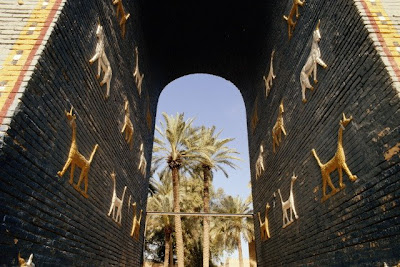The Iraqi Joza آلة الجوزة العراقية
Maqam Nawa and Bazringosh
London Fiddle Conference
20-22 February, 2009
Excerpt read by Yeheskel Kojaman (author of The Maqam Music Tradition of Iraq)
Maqam Nawa (6:00)
Bazringosh, traditional song in nawa mode (8:48)
Kamanja is the name of the violin in Arabic but the special thing about this instrument is that it is called joza. Joza in Arabic means coconut. It is called a joza because its soundbox is made of a coconut shell. It is open from both sides, and one side is covered with a special skin - a fish skin, which is found in Iraq. This joza is, like a violin, played with four strings. The tuning is different from European tuning; it is like the tuning used in oriental instruments. But it is like a violin, and actually, today, they use violin strings for the instrument.
This instrument is used in a tradition called the Iraqi Maqam. The Iraqi Maqam is a musical tradition exclusively used in Iraq; it is only in Iraq even all other Arab countries do not know it and do not perform it. The Iraqi Maqam is actually a vocal tradition. We have now 56 pre-composed "songs", some of them very old, and some of them were composed at the beginning of the twentieth century. But all of them are called Iraqi maqams. They have special rules for the maqam, and we are not going to talk about that.
But the instruments with the maqam is [sic] not always used because it is a vocal tradition. It can be sang without instruments and with the accompaniment of instruments. The instruments traditionally used with Iraqi Maqam are two stringed instruments. One is kamana/joza, which we are going to see now. And the other is called santur, which is a sort of dulcimer. And, of course, with percussionists. This is the traditional group, which is called chalghi. The chalghi is the team which accompanies the maqam singer.
Mr. Suhayb is one of the most famous kamana/joza players. He is a member of a family - of a musical family. His father is a singer - maqam singer - and an authority in maqam history and theory, and a dulcimer player - santur player. All the brothers are famous musicians. Most of them are specialized in Iraqi Maqam music.
For instance, he will play maqam. But when he plays maqam, he is actually playing what he does when he accompanies the singer - and the sound, the playing of a maqam, which should be sang actually. And when he plays Maqam Nawa or Maqam Hijaz Kar or Maqam Rast or any other maqam, he is playing what he plays when he accompanies a singer. He doesn't sing but he plays it.
Well, I think we shall now listen to a maqam played, then we'll talk about Iraqi maqams.
He is playing a maqam which is called Maqam Nawa, one of the 56 maqams which are known in the tradition today.

هذه القياسات للالة الجوزة افادني بها المرحوم تركي الجراخ عام ١٩٧٧حين صنعت هذه الجوزة، وقام بجراخة الزند والمفاتح لي بواسطة الة الخراطة اليدوية (التورنة) واعطاني هذه القياسات وافاد بان هذه القياسات هي المعتمدة لالة الجوزة من اساتذة العازفين اليهود منذ ان كان عاملا صغيرا عند والده الذي كان ايضا جراخا للخشب وصانعا للجوزه في عشرينيات القرن الماضي في محله الكائن في شارع الامين قرب تمثال الرصافي ... ومما يذكر اني قد اخبرته بان الاستاذ شعوبي ابراهيم يصنع الزند من خشب النارنج او المشمش وبطول اقل قليلا من قياساته فأجابني غاضبا وبعصبية ان شعوبي قد خرب صناعة الجوزة بهذا العمل وانه لايقبل العمل الا بقياساته هو وبخشب الزان فقط (وباللهجة العراقية: لتعلمنه انت وشعوبي شغلتنه) وحينها اضطررت للقبول بالموضوع لانه افضل الجراخين لها ولايوجد احد اعرفه سواه يتقن هذه المهنه في وقتها. ومن الطريف انه حينما اكمل العمل وتقاضى مبلغ دينار واحد له وكان مبلغا ليس قليلا حينها قال لي: انك شاب في مقتبل العمر ومثقف (شاهدني وانا بالزي الجامعي واحمل الليفكس) اشجابك على هذي الشغله العوجه؟ فأخبرته انها للهواية فقط، فقال لي اتركها والتفت لدراستك ان من يمشي وراهه ميصير ابراسه خير






رائع جدا وشكرا لكل الجهود المبذولة في تحرير تطوير الموقع راجيا لكم كل النجاح والتقدم
ReplyDelete